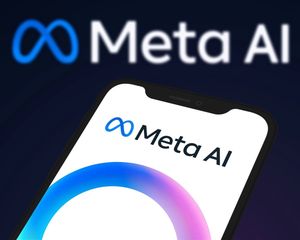
In a monumental stride towards the convergence of traditional finance and the burgeoning digital asset economy, SWIFT, the global financial messaging network, has embarked on a pivotal pilot program to test stablecoins on Linea, an Ethereum Layer-2 network. This initiative, launched around September 26-28, 2025, signifies a profound shift in SWIFT's strategy, moving beyond its traditional messaging role to explore direct on-chain settlement. The implications are far-reaching, promising to revolutionize cross-border payments, enhance efficiency, and accelerate the mainstream adoption of digital assets within institutional finance.
The move underscores SWIFT's commitment to modernizing its vast network of over 11,000 financial institutions, addressing long-standing inefficiencies in international transactions. By leveraging Linea's high-speed, low-cost, and scalable infrastructure, SWIFT aims to combine messaging and settlement into a single, real-time, on-chain process. This direct approach is poised to dramatically reduce costs and enable real-time tracking of payment progress, a stark contrast to the multi-day settlement times and numerous intermediaries that characterize the current correspondent banking system. The pilot specifically explores the utility of a stablecoin-like token as a model for direct interbank settlement, signaling a clear path towards tokenized financial instruments.
The Genesis of a Digital Revolution: Details and Dynamics
The collaboration between SWIFT and Consensys, the blockchain software company behind Linea, is a cornerstone of this groundbreaking pilot. Linea, an Ethereum Layer 2 zk-rollup network, was strategically chosen for its robust security features, scalability, and particularly its strong privacy protections through zero-knowledge proofs. These advanced cryptographic techniques are crucial for addressing the stringent compliance and regulatory concerns regarding data privacy that are paramount for financial institutions operating on public blockchain networks.
This stablecoin testing is not an isolated event but rather a significant component of SWIFT's broader push into digital assets, which has been gaining momentum throughout 2025. Following announcements in October 2024, SWIFT initiated live digital asset trials across North America, Europe, and Asia earlier this year, with the Linea pilot representing a critical next step. More than a dozen major global banks are actively participating in the trial, including financial titans like BNP Paribas (EPA: BNP) and BNY Mellon (NYSE: BK). While the full "stablecoin initiative" or "interbank token project" is still under review, the pilot program with Linea has already generated positive market reactions, with Linea's native token reportedly seeing a significant price increase following the announcement. Public statements from SWIFT consistently emphasize their dedication to ensuring their global network can securely and efficiently support digital assets and currencies through existing SWIFT connectivity.
Shifting Tides: Who Wins and Who Faces the Challenge?
The integration of blockchain technology by SWIFT is set to create a new hierarchy of winners and present significant challenges for those slow to adapt. At the forefront of the beneficiaries are Consensys, as the developer of the Linea network, and Linea itself. Increased adoption and validation by SWIFT could significantly boost Linea's prominence and potentially its native token's value, positioning it as a leading institutional-grade Layer 2 solution.
Participating banks such as BNP Paribas (EPA: BNP) and BNY Mellon (NYSE: BK) are poised to gain a considerable competitive advantage. By being early adopters and contributors to this pilot, they are at the vanguard of offering modernized cross-border payment services, which could attract more clients seeking efficiency and speed. Other blockchain infrastructure providers and technology companies specializing in enterprise-grade DLT solutions, especially those with strong privacy-preserving capabilities, may also see increased demand for their services as more financial institutions look to integrate similar technologies.
Conversely, traditional correspondent banks heavily reliant on legacy systems and slower settlement processes face the risk of losing market share. Their cumbersome, multi-intermediary models could become obsolete in an environment where direct, real-time on-chain settlement is possible. While established cross-border payment solutions like Ripple (XRP) have long championed blockchain for remittances, SWIFT's move signals a direct institutional embrace of similar principles, potentially shifting the competitive landscape. SWIFT's evolving multi-rail framework, which includes testing various ledgers, suggests a future where interoperability, rather than single-platform dominance, is key, meaning even existing blockchain players may need to adapt to SWIFT's overarching strategy.
A Wider Lens: Reshaping the Global Financial Tapestry
SWIFT's deep dive into DLT, particularly with the Linea pilot, is more than just a technological upgrade; it signals a profound, systemic shift in global finance. This initiative fits squarely into the broader industry trend of modernizing global payments, aiming to dismantle the decades-old inefficiencies of the correspondent banking system. The promise of unprecedented speed, drastically reduced costs, and enhanced transparency in international settlements is set to redefine how value moves across borders.
This institutional validation of blockchain technology and stablecoins is a critical accelerant for their mainstream adoption within traditional finance. With the tokenized asset market projected to reach trillions by 2030, SWIFT's role in bridging these new forms of value with existing financial systems is indispensable. The ripple effects will extend to the very definition of SWIFT's role, as it evolves from a mere messaging network to a potential platform for direct value transfer, positioning it in direct competition with emerging blockchain-based payment systems.
Regulatory and policy implications are also significant. Linea's use of zero-knowledge proofs is a game-changer, addressing paramount concerns of privacy and compliance that have historically hindered financial institutions' engagement with public blockchain networks. The success of these trials could provide a blueprint for regulatory bodies globally, potentially expediting the approval and standardization of blockchain-based settlements. Historically, SWIFT has been a standard-setter in financial communications, and its embrace of DLT, alongside its full transition to the ISO 20022 MX format by November 2025 (which natively supports blockchain features), underscores a comprehensive strategy to lead this digital transformation. Its participation in initiatives like Project Agora, exploring tokenized commercial bank deposits and wholesale CBDCs, further solidifies its commitment to a future where digital assets are seamlessly integrated into the global financial fabric.
The Road Ahead: Navigating the Digital Frontier
The immediate aftermath of the Linea pilot will be closely watched, with financial markets eager for initial findings and progress reports. In the short term, successful validation of the stablecoin testing could lead to expanded pilot programs, involving more banks and extending to a wider array of cross-border corridors. Long-term possibilities include the full integration of blockchain-based settlement rails into SWIFT's core offerings, potentially leading to the launch of SWIFT-facilitated stablecoin solutions or a standardized framework for interbank digital asset transfers.
This strategic pivot demands significant adaptations from market participants. Banks will need to invest in upgrading their technological infrastructure, developing expertise in DLT, and potentially re-evaluating their correspondent banking relationships. New market opportunities will emerge for technology providers, cybersecurity firms specializing in blockchain, and consulting services guiding institutions through this transition. Challenges will include managing the complexities of integrating new technologies with legacy systems, navigating evolving regulatory landscapes, and addressing potential scalability issues as adoption grows.
Several potential scenarios could unfold. SWIFT could firmly establish itself as the central, indispensable hub for institutional digital asset settlement, leveraging its existing network and trust. Alternatively, the ecosystem might become more fragmented, with multiple DLT players coexisting, each catering to specific niches, and SWIFT playing a crucial, but not exclusive, interoperability role. Regardless, the trajectory points towards a more interconnected, efficient, and technologically advanced global financial system.
A New Dawn for Global Payments: Key Takeaways and Future Outlook
SWIFT's engagement with Ethereum's Linea for stablecoin testing marks a pivotal moment in financial history, signifying an unequivocal embrace of distributed ledger technology by the bedrock of global financial messaging. The key takeaway is clear: the future of cross-border payments is digital, tokenized, and increasingly reliant on blockchain's inherent efficiencies. This initiative is set to accelerate the convergence of traditional finance (TradFi) and decentralized finance (DeFi), forging a path towards a more integrated and robust global financial ecosystem.
Moving forward, the market will assess the success of these trials, looking for concrete metrics on cost reduction, transaction speed, and enhanced transparency. The lasting impact will be a fundamentally more efficient, secure, and interconnected global financial system, where the friction of international payments is significantly reduced. This will benefit businesses engaged in global trade, financial institutions seeking operational efficiencies, and ultimately, consumers through lower costs and faster access to funds.
Investors should closely monitor the progress of SWIFT's various DLT initiatives, particularly the Linea pilot results and any subsequent announcements regarding broader implementation. Attention should also be paid to regulatory developments in major financial jurisdictions, as these will heavily influence the pace and scope of digital asset adoption. Furthermore, the performance and strategic moves of DLT-focused companies, blockchain infrastructure providers, and digital assets that demonstrate strong institutional utility will be crucial indicators of market direction in the coming months and years. This is not merely an upgrade; it is a re-architecture of global finance.
This content is intended for informational purposes only and is not financial advice.





